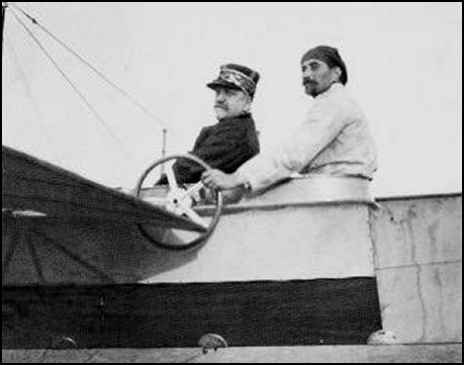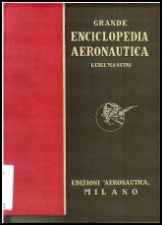
1874-1910 |
 |
et le general Brun ä Chalons en mai 1910. (Cliche l'Illustration 1910). from Les moteurs et aeroplanes ANTOINETTE |
|
You will find numerous photos of him on this website, along with a biography, in French. |
|
Knoxville, Tennessee: July 4, 1910, Transcribed by Bob Davis - 9-24-03 Wachter was the first of the contestants to appear for practice this morning. In his monolpane he battled long with the gale amid the enthusiasm of the spectators, until the rain compelled him to make a descent. He resumed his flight in the afternoon and was flying magnificently when suddenly an explosion was heard. The wings of the machine doubled up and the monoplane dropped to the earth with lightning speed. The aviator was killed instantly in view of the spectators among whom were his wife and little daughter. The accident is attributed to the breaking of the wire stays. The prospects for the meeting, which will continue until July 10 are excellent. Seventy-two machines are entered, representing thirteen types. The competitors include Latham, Count De Lambert, Sommer and other cracks. The prizes amount to $50,000. Americans secured the best prizes last year at the first international meeting here, but this year there are no American entries. It was at Rheims that Glenn H. Curtiss won the International cup, flying 12.42 miles in 13 minutes, 15 3-5 seconds." Interesting that Websters gives a definition for the adjective, crack (dated 1793) as "of superior excellence or ability." Bob Davis |
|
|
|
"So I reflected that a biplane looks like a biplane, while a monoplane tooks like a bird; and, projmptly deserting the Farman camp, began snooping about the Antoinette and its master-pilot Charles Wachter. He was an Alsationa, with calm green eyes and the baked skin of a sailor; somewhat older than the average aviator, and very resolute. To my question he answered; 'Yes, I will take you on a turn or two, to-morrow.'" |
|
"So I reflected that a biplane looks like a biplane, while a monoplane tooks like a bird; and, projmptly deserting the Farman camp, began snooping about the Antoinette and its master-pilot Charles Wachter. He was an Alsationa, with calm green eyes and the baked skin of a sailor; somewhat older than the average aviator, and very resolute. To my question he answered; 'Yes, I will take you on a turn or two, to-morrow.'" |
 |
GRANDE ENCICLOPEDIA AERONATICA Luigi Mancini Product Details Cloth: 660 pages Publisher: EDIZIONIE - AERONAUTICA L. MANCINI TEL 71-624 - MILANO - VIA GESÙ 6 |
|
Italian Wacher Carlo Nato nel 1892, all'atto della costituzione della Società Antoniette venne ingaggiato come meccanico partecipando a molte gare motonautiche. Interessatosi all'aviazione dopo la costruzione del monoplano Antoniette, nel maggio 1910 cominciò a volare ed il 15 compì superbi voli portando come passeggero il generale Brun. Essendo pilota meraviglioso istituì una scuola di pilotaggio che diresse sino a che, recatosi al meeeting di Reims, il 3 luglio 1910 dopo aver lottato audacemente con il vento e con la pioggia, per rottura della fusoliera del proprio apparecchio precipitava al suolo uccidendosi. English Wacher Charles He was born in 1892. He worked as a mechanic for the Antoniette Society and participated in many motorboat races. He became interested in the aviation following the construction of the Antoniette monoplane. In May 1910, he began to fly and on the 15th made several splendid flights carrying General Brun as his passenter. He was a wonderful pilot and established a flying school which he directed. He went to the meeting in Reims the July 3, 1910. After he had fought heroically against the wind and the rain, due to a failure of the fuselage of his aeroplane, he crashed and was killed. Courtesy of Giovanni Giorgetti, 7-29-09 |
|
If you have any more information on this Early Flier, please contact me. E-mail to Ralph Cooper Back 

|